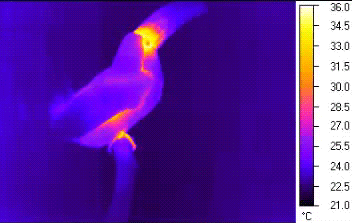The First Pizza Joint
The First Pizza Joint
Antica Pizzeria Port'Alba, in Naples, Italy, is widely considered the world’s first pizzeria. It was first established in 1738 as a peddler’s stand. In 1830, it became a brick-and-mortar restaurant in the town center. Since its opening day, their ovens have been lined with lava rocks taken from nearby Mount Vesuvius.
More Posts from Theperpetualscholar and Others
Egyptological PSA
Please learn the difference between:
Hieroglyphs (Noun): “The text is written using hieroglyphs”
Hieroglyphics (Adjective): “This is a hieroglyphic text”
The Egyptological community thanks you for your time and cooperation.


Christopher Monroe spends his life poking at atoms with light. He arranges them into rings and chains and then massages them with lasers to explore their properties and make basic quantum computers. Last year, he decided to try something seemingly impossible: to create a time crystal.
The name sounds like a prop from Doctor Who, but it has roots in actual physics. Time crystals are hypothetical structures that pulse without requiring any energy — like a ticking clock that never needs winding. The pattern repeats in time in much the same way that the atoms of a crystal repeat in space. The idea was so challenging that when Nobel prizewinning physicist Frank Wilczek proposed the provocative concept1 in 2012, other researchers quickly proved there was no way to create time crystals.
But there was a loophole — and researchers in a separate branch of physics found a way to exploit the gap. Monroe, a physicist at the University of Maryland in College Park, and his team used chains of atoms they had constructed for other purposes to make a version of a time crystal2 (see ‘How to create a time crystal’). “I would say it sort of fell in our laps,” says Monroe.
And a group led by researchers at Harvard University in Cambridge, Massachusetts, independently fashioned time crystals out of 'dirty’ diamonds3. Both versions, which are published this week in Nature, are considered time crystals, but not how Wilczek originally imagined. “It’s less weird than the first idea, but it’s still fricking weird,” says Norman Yao, a physicist at the University of California, Berkeley, and an author on both papers.
Continue Reading.
holy shit

Mimosa pudica is an herb of the pea family and is known for its compound leaves that fold inward and droop when touched or shaken. This defense mechanism protects the leaf from harm and allows for reopening a few minutes later.

Happy #NationalWineDay! Here’s some red wine chemistry: http://wp.me/p4aPLT-hz

The eyestalk tentacles of snails are “muscular hydrostats” - the same type of structure as human tongues and elephant trunks.

This GIF shows how the toucan releases heat using its beak to cool itself off.
The toucan beak isn’t just beautiful, it’s also an adjustable thermal radiator that the bird uses to warm and cool itself. When the bird is hot, the blood vessels in their beak open up to allow more circulation to enable heat to escape. Birds can’t sweat so evolution has come up with some life hacks to get the job done. [video]

Khövsgöl Lake Festival, Mongolia, Celine Jentzsch Photography

Figure 1. Bun (Lepus townsendii) approaching ideal bun form (ei. a perfect fluffy orb) over the course of 5.2 hours. Ambient temperature -6°C to -15°C.

28.05.17 // new week, new window 💭
-
 spacegirlsgang liked this · 4 years ago
spacegirlsgang liked this · 4 years ago -
 the-last-scythian liked this · 4 years ago
the-last-scythian liked this · 4 years ago -
 ink-phoenix liked this · 4 years ago
ink-phoenix liked this · 4 years ago -
 khaotunng liked this · 4 years ago
khaotunng liked this · 4 years ago -
 tomboyluce liked this · 4 years ago
tomboyluce liked this · 4 years ago -
 dearqueerdeers liked this · 4 years ago
dearqueerdeers liked this · 4 years ago -
 hazelnutrosewaterpomegranate reblogged this · 4 years ago
hazelnutrosewaterpomegranate reblogged this · 4 years ago -
 torturedgnom3 liked this · 5 years ago
torturedgnom3 liked this · 5 years ago -
 inventar-io liked this · 5 years ago
inventar-io liked this · 5 years ago -
 soranus666 liked this · 6 years ago
soranus666 liked this · 6 years ago -
 kochana-lulu liked this · 6 years ago
kochana-lulu liked this · 6 years ago -
 offbeatbrainwaves reblogged this · 6 years ago
offbeatbrainwaves reblogged this · 6 years ago -
 offbeatbrainwaves liked this · 6 years ago
offbeatbrainwaves liked this · 6 years ago -
 food-study liked this · 6 years ago
food-study liked this · 6 years ago -
 girlychef reblogged this · 6 years ago
girlychef reblogged this · 6 years ago -
 starshatterer reblogged this · 6 years ago
starshatterer reblogged this · 6 years ago -
 frankenstein-girl liked this · 7 years ago
frankenstein-girl liked this · 7 years ago -
 minnfuntimes liked this · 7 years ago
minnfuntimes liked this · 7 years ago -
 sweetturtlecoffee liked this · 7 years ago
sweetturtlecoffee liked this · 7 years ago -
 largetoaster liked this · 7 years ago
largetoaster liked this · 7 years ago -
 honestlynervoustimetravel liked this · 7 years ago
honestlynervoustimetravel liked this · 7 years ago -
 yellowidiomas reblogged this · 7 years ago
yellowidiomas reblogged this · 7 years ago -
 rulingdarnkness liked this · 7 years ago
rulingdarnkness liked this · 7 years ago -
 rulingdarnkness reblogged this · 7 years ago
rulingdarnkness reblogged this · 7 years ago -
 terradisirene reblogged this · 7 years ago
terradisirene reblogged this · 7 years ago -
 savvvvvy liked this · 7 years ago
savvvvvy liked this · 7 years ago -
 reyneclaw liked this · 7 years ago
reyneclaw liked this · 7 years ago -
 ttakeavacation liked this · 7 years ago
ttakeavacation liked this · 7 years ago -
 ioannemos liked this · 7 years ago
ioannemos liked this · 7 years ago -
 morfinwen reblogged this · 7 years ago
morfinwen reblogged this · 7 years ago -
 morfinwen liked this · 7 years ago
morfinwen liked this · 7 years ago -
 agentmcfly24601 liked this · 7 years ago
agentmcfly24601 liked this · 7 years ago -
 gullible-fallen-angel reblogged this · 7 years ago
gullible-fallen-angel reblogged this · 7 years ago -
 aceofstars16 reblogged this · 7 years ago
aceofstars16 reblogged this · 7 years ago -
 littletingstorm liked this · 7 years ago
littletingstorm liked this · 7 years ago -
 mysterious-lesbian-lovergirl liked this · 7 years ago
mysterious-lesbian-lovergirl liked this · 7 years ago -
 ammg-old liked this · 7 years ago
ammg-old liked this · 7 years ago -
 hhopebagel reblogged this · 7 years ago
hhopebagel reblogged this · 7 years ago -
 hhopebagel liked this · 7 years ago
hhopebagel liked this · 7 years ago